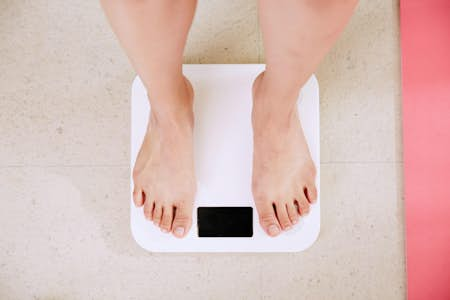Why is it important to warm up?
Numerous studies have shown that if you don’t warm up before doing exercise, you’re at a significantly greater risk of getting an injury. You could stretch or tear a ligament (sprain), tear a muscle or tendon (strain), or twist a joint and fall over.
If you’re over 50 and untrained, you are at an even greater risk of injuring yourself during activity if you don’t warm up beforehand. Whether you’re somebody who has always kept fit, or you’re just starting an exercise programme, the last thing you want is an injury that puts you out of action for several months--or worse, permanently.
Ready to transform your life? Whether you're looking for a new pair of running shoes or some shiny home gym equipment, you can find everything you need to fuel your fitness journey with our partner brands.
By warming up, you will gradually elevate your heart rate and warm up your muscles, tendons and joints. A warmer muscle is less prone to injury, more flexible and better prepared for strenuous exercise.
Speaking to Health Times about the importance of taking adequate exercise as well as ensuring you have a proper warm up, Paul Reed from The Athlete Factory said: "As we grow older, we can often mistake joint and muscular pain as inflammatory issues or worse when in most cases it is due to lack of mobility and movement. Making sure you can fit some daily movement in including static and active stretching, this is often enough to counteract such pain. Be consistent though, movement is life."
Static stretches and warming up
Numerous studies have shown that doing static stretches (holding a stretch for a fixed period) before exercise does not reduce the rate of injury, and it’s better to do some dynamic stretches instead.
Dynamic stretches are simple and easy exercises which dynamically work your muscles and joints--such as swinging your arms around in circles or rotating your hips. By stretching in this way, your joints will release their natural lubricant (synovial fluid) and your muscles will become warmer; all of this helps to reduce the risk of injury.
None of this is to say that you shouldn’t do static stretches; regularly stretching your hamstrings and your lower back, for example, can help you to stay flexible, relieve back pain and correct posture problems.
When is it a good time to do static stretches?
After your workout or exercise session is best--because your muscles are warmer--and have more blood flowing to them; both of these factors will significantly help you to stretch your muscles further and more effectively than if you hadn’t warmed up.
How to warm up at home before exercise
Try to find a wide-open space in your house, or outside somewhere. You won’t need any equipment.
Dynamic stretches
Arms circles
Circling your arms backwards and forwards will help to warm up and lubricate your shoulder joints. Swing your arms forwards about 15 times, and then do 15 swings backwards.
Calf raises
These will warm up your calf muscles. Simply stand with your feet together, raise yourself onto your tiptoes, and then gently lower yourself back down to the floor. Do 6-10 reps.
Leg swings
These are mainly for warming up your hamstrings. Find something to support yourself with one hand, such as a railing, and gently swing one leg backwards and forwards. Do 10 full swings on each leg.
Ankle circles
To warm up your ankles, point the toes of your left foot into the floor and move it around in a circular-like fashion. Circle your ankle clockwise, and anticlockwise a few times. Repeat the stretch on your right foot.
The warm up
Jog on the spot - 2 minutes
Begin your warm up by lightly jogging on the balls of your toes for 2 minutes.
Side steps - 1 minute
Side step to the right for a few steps and then return to the left in the same fashion. Repeat this drill for a full minute.
High knees - 30 seconds
While jogging on the spot, try to bring your knees up as high as you can. Maintain this for half a minute.
Wall-presses - 10 reps
These are like press-ups, but instead, you do them from a standing position. They’ll warm up the muscles and joints in your upper body.
- Stand a few feet away from a wall.
- Place your hands on the wall at about shoulder-width apart.
- Lower your shoulders and chin towards the wall.
- Push off when your chin is almost touching the wall.
- Repeat for 10 reps.
Lunges - 5 reps per leg
Lunges are an effective dynamic stretch and exercise for warming up your legs and glute area.
- Stand with your feet shoulder-width apart.
- Take a big step forward with your left leg.
- Bend your front knee and lower yourself to the floor.
- You don’t need to bend your front knee too much, just enough to work it gently.
- Make sure your knee stays behind your toes.
Now that your body, joints, muscles and tendons are adequately warmed up, you’re ready to do some exercise!
Make sure that you stick to the NHS guidelines of doing at least 150-minutes of moderately intensive exercise per week, and at least 2 strength and mobility workouts each week. Below are some links to our quick 10-minute workouts for over 50s; and some other guides you can read if you would like to improve your overall health and fitness levels.
- 10-minute home cardio workout for over 50s
- Basic strength and mobility exercises for over 50s
- Going to the gym for the first time at 50
- How to improve your balance
- Over 50s couch to 5K training programme









